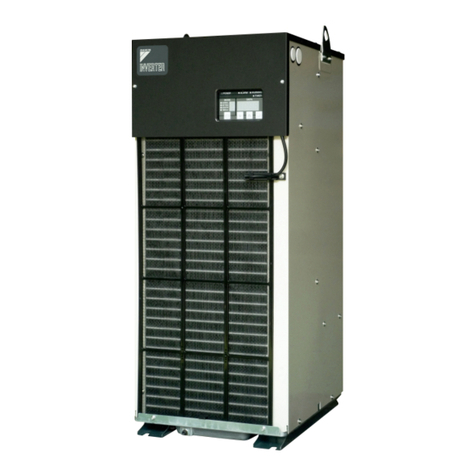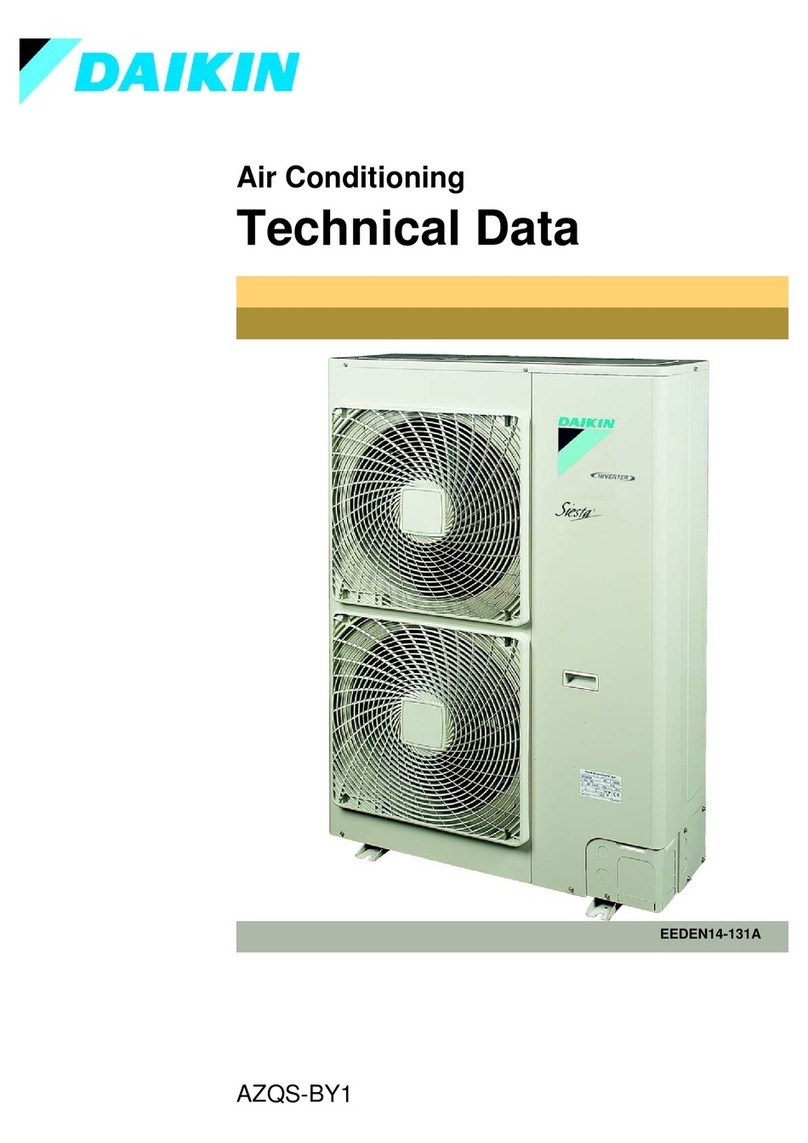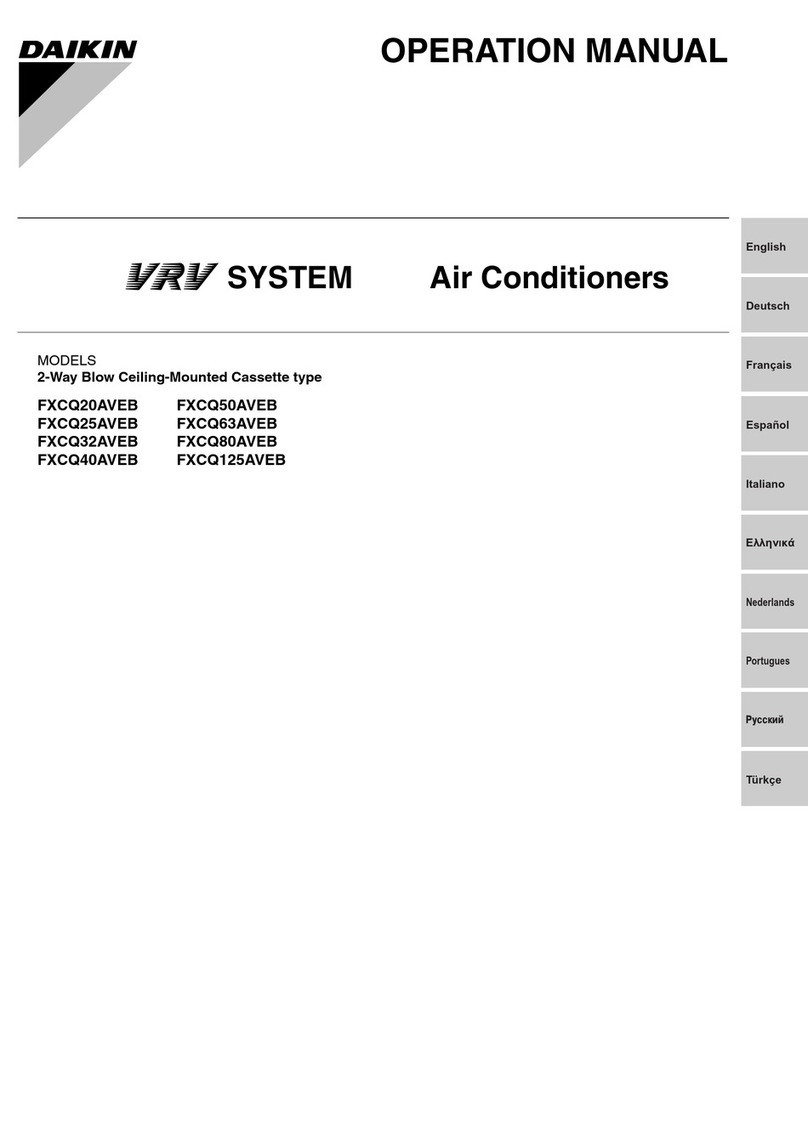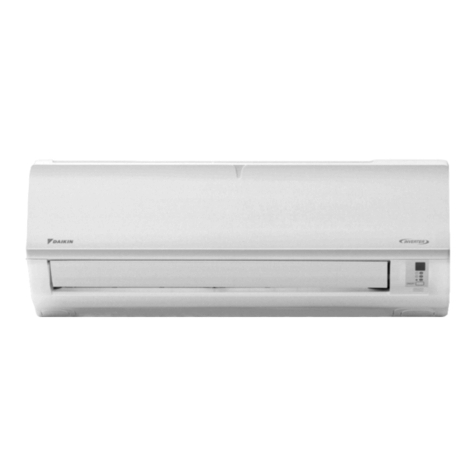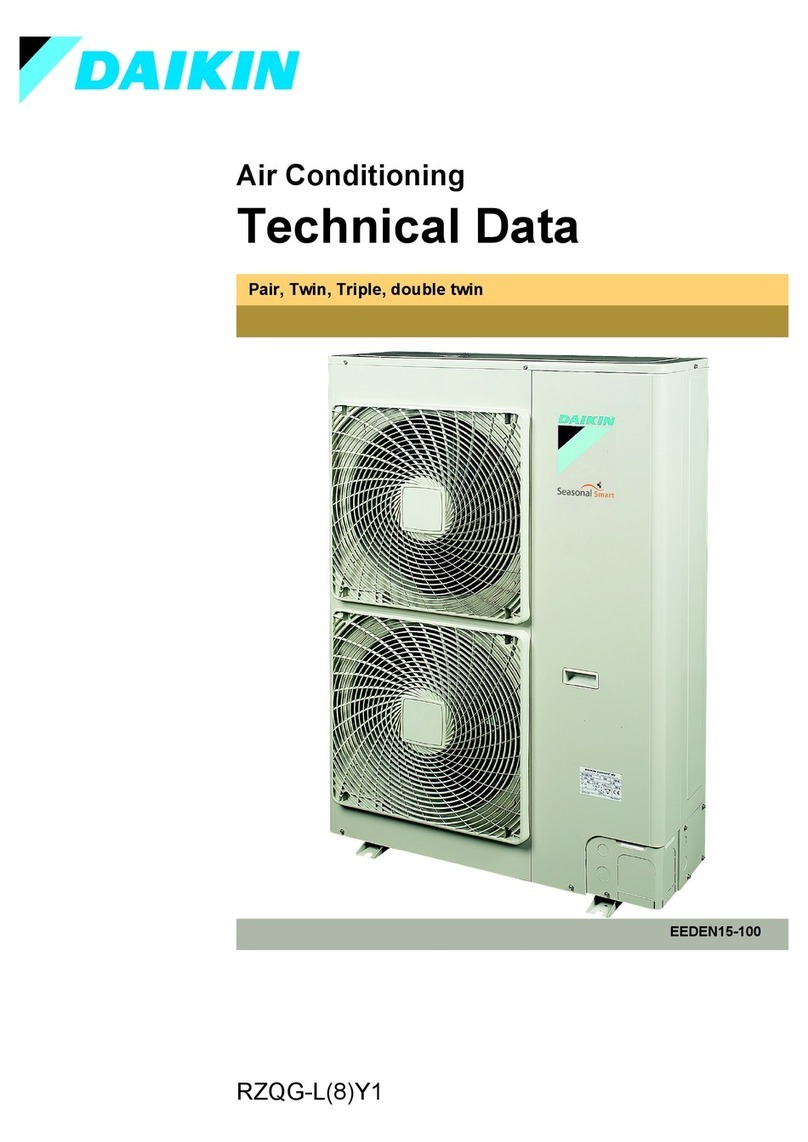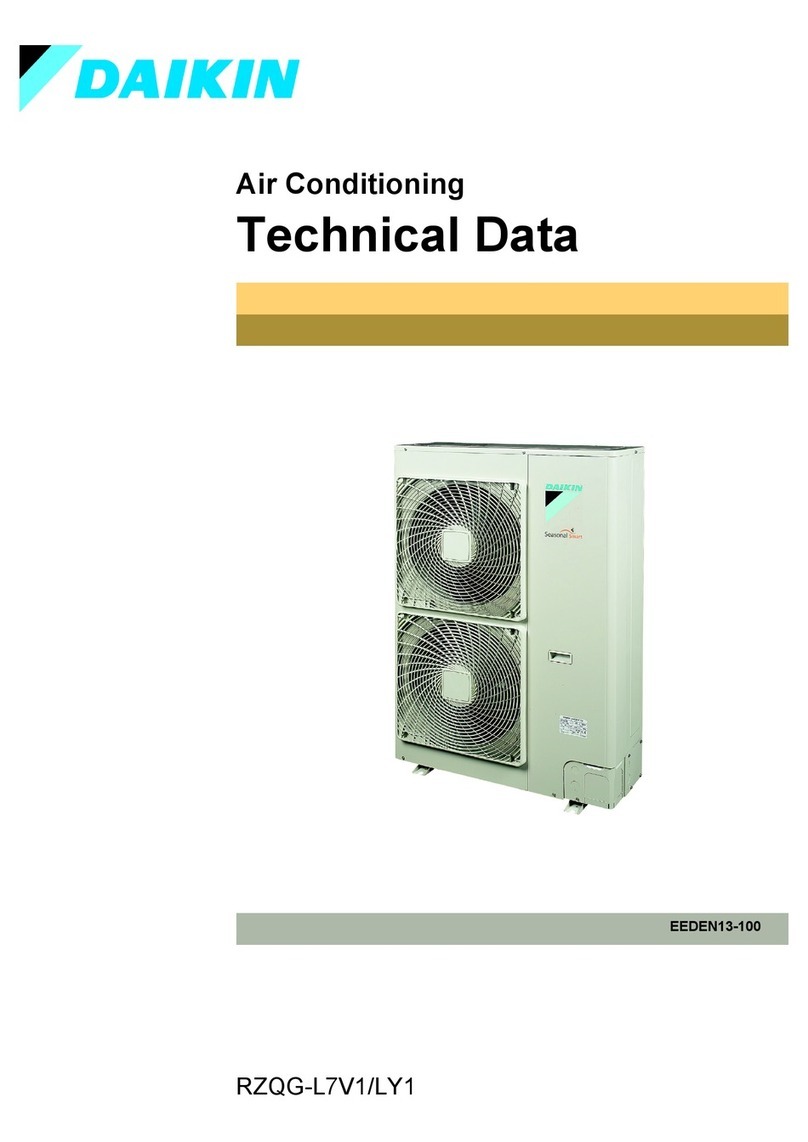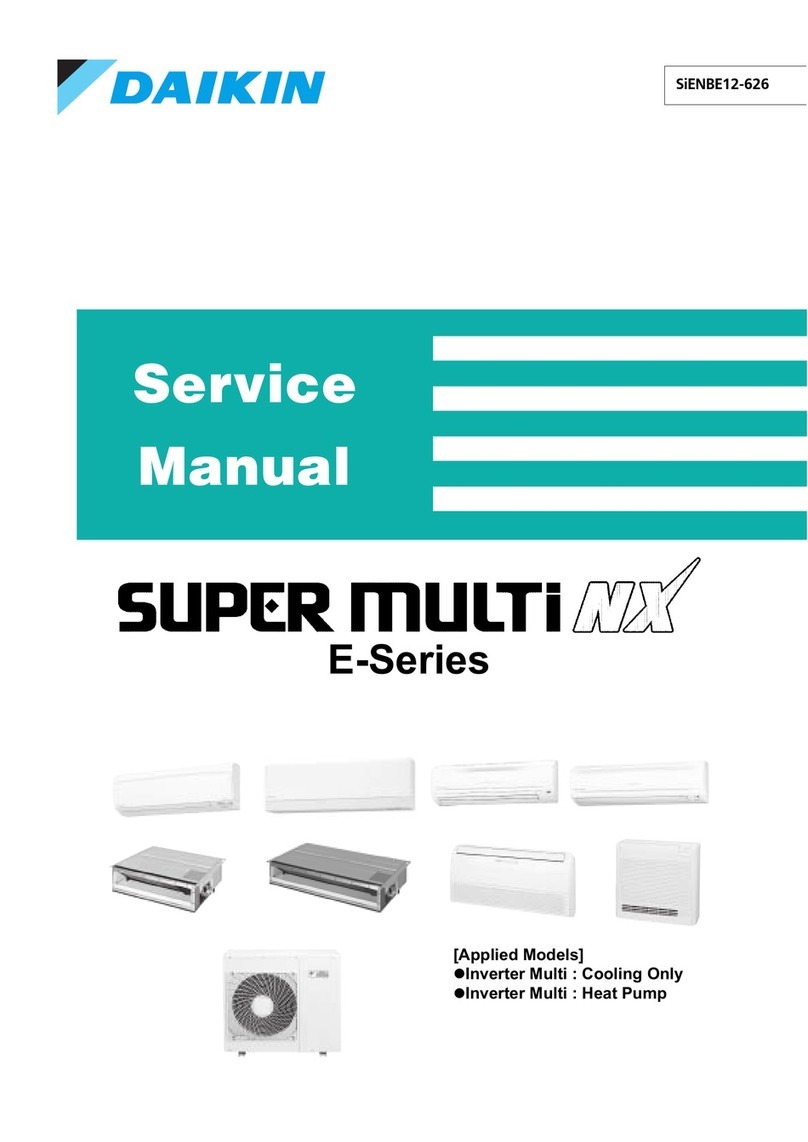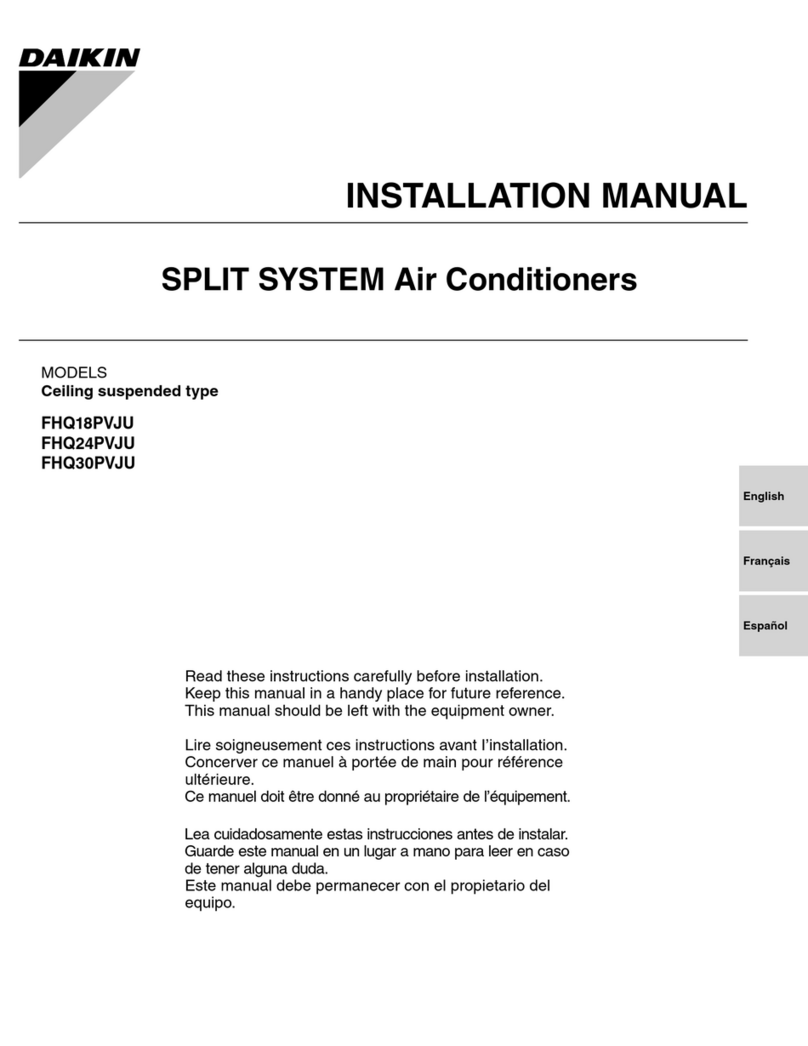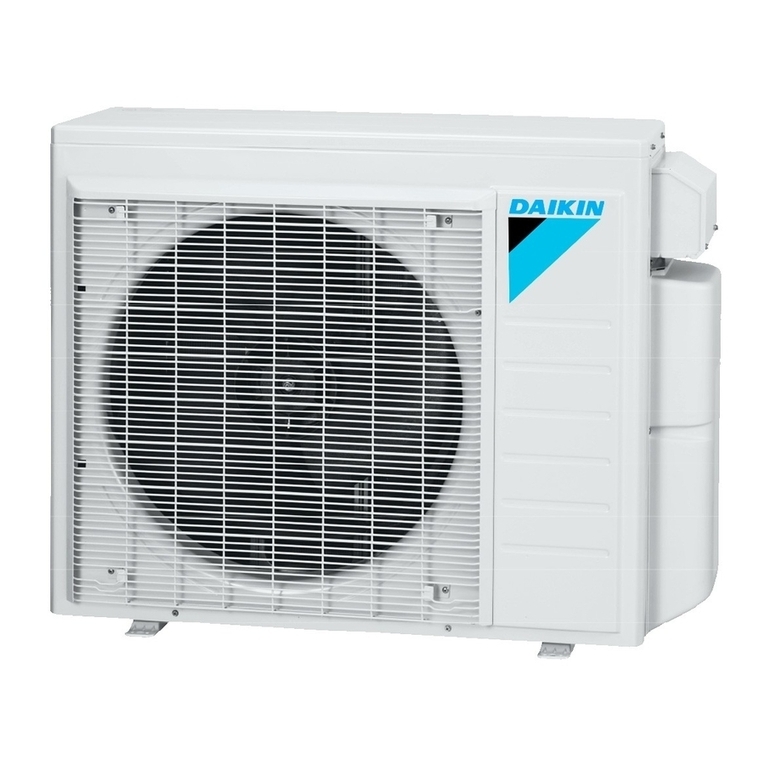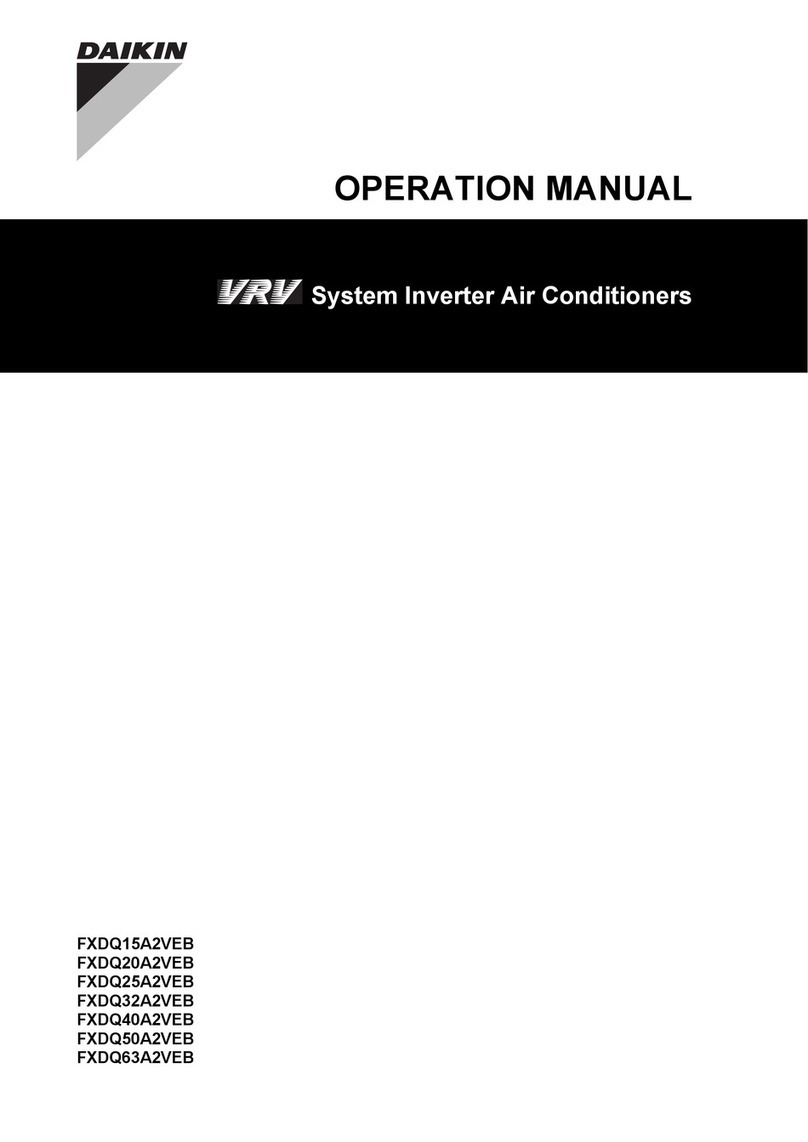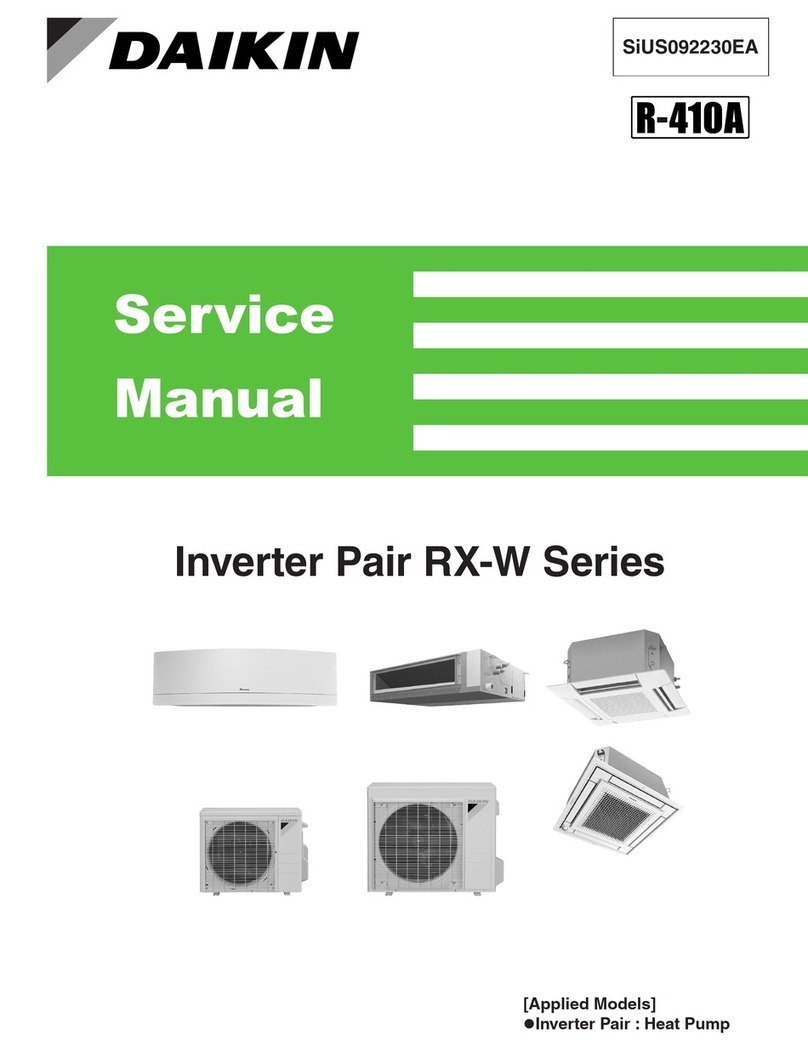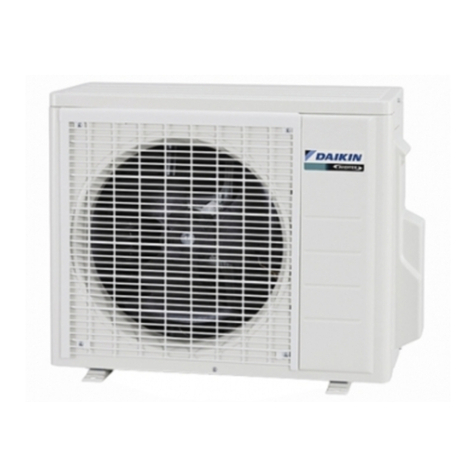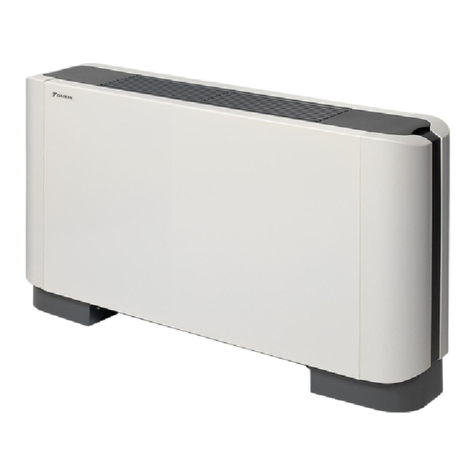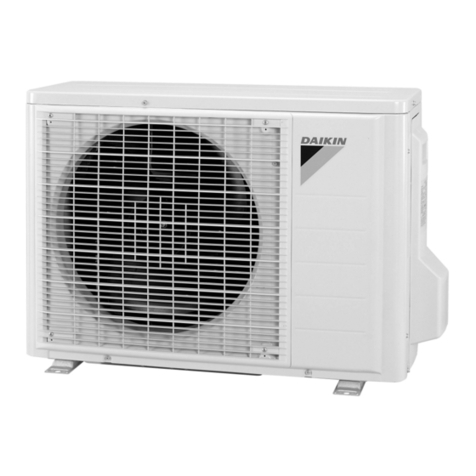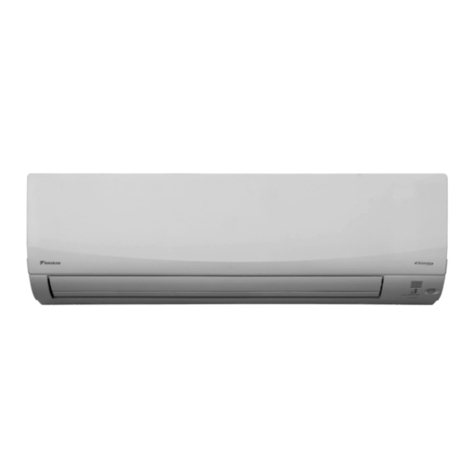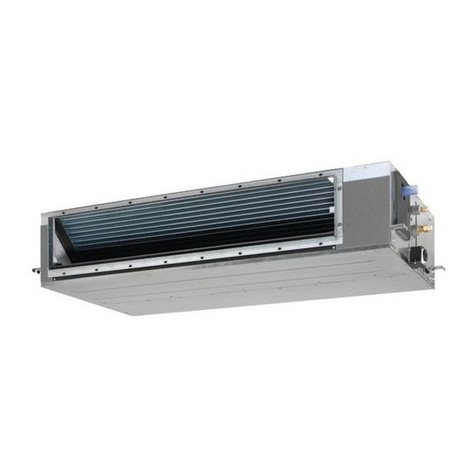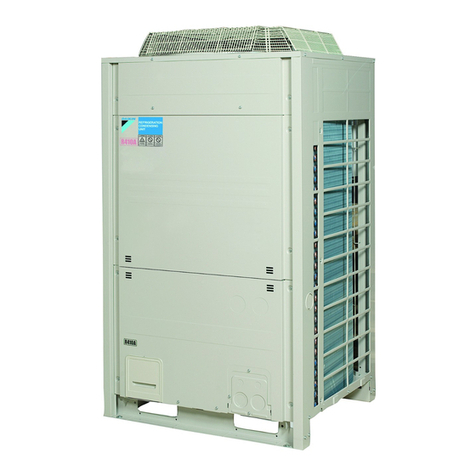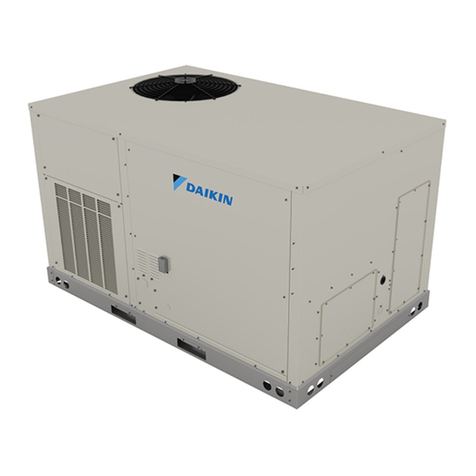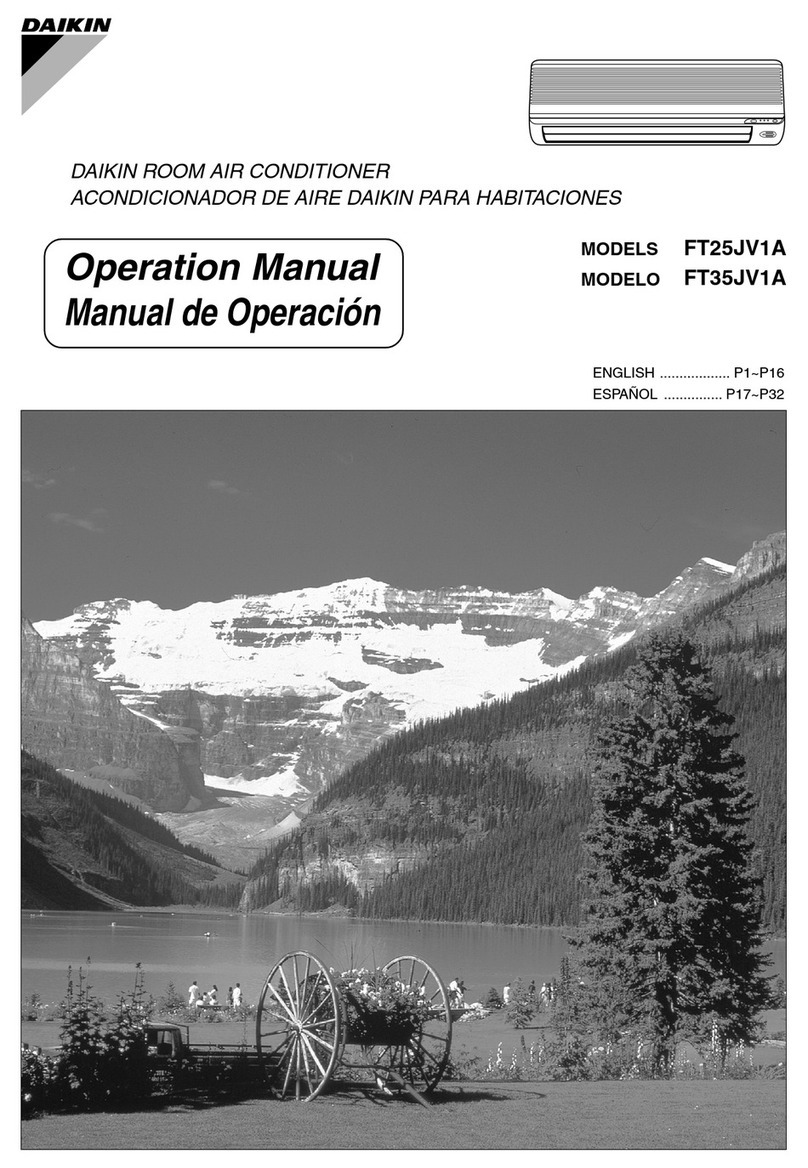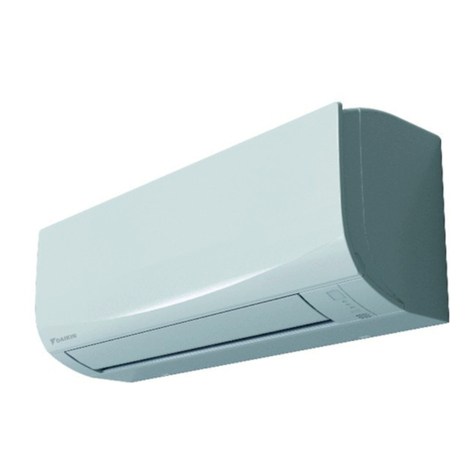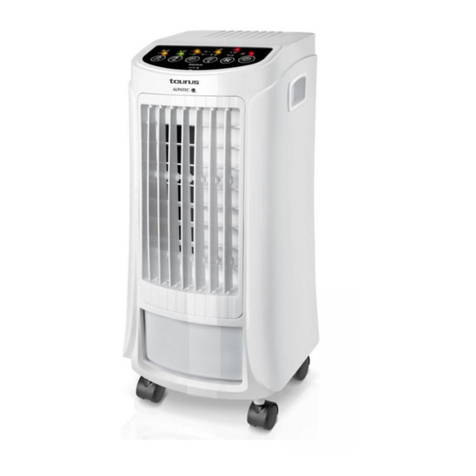
4
d. Copy of the inspection report issued by carrier
representative at the time damage is reported to the
carrier. The carrier is responsible for making prompt
inspection of damage and for a thorough investigation
of each claim. The distributor or manufacturer will not
accept claims from dealers for transportation damage.
NOTE: When inspecting the unit for transportation damage, re-
move allpackagingmaterials.Recycleordispose ofthepackaging
material according to local codes.
PRE-INSTALLATION CHECKS
Carefullyreadall instructionsfor the installationprior to installing
unit.Ensureeachstepor procedureisunderstoodand anyspecial
considerations are taken into account before starting installation.
Assemblealltools,hardwareandsuppliesneededtocompletethe
installation. Some items may need to be purchased locally.
UNITLOCATION
T
O
PREVENT
POSSIBLE
EQUIPMENT
DAMAGE
,
PROPERTY
DAMAGE
,
PERSONAL
INJURY
OR
DEATH
,
THE
FOLLOWING
BULLET
POINTS
MUST
BE
OBSERVED
WHEN
INSTALLING
THE
UNIT
.
WARNING
IMPORTANT NOTE: Remove wood shipping rails prior to installa-
tion of the unit. See important note under Roof Curb Installation
Only.
ALL INSTALLATIONS:
IMPORTANT NOTE: Unit should be energized 24 hours prior to
compressor start up to ensure crankcase heater has suffi-
ciently warmed the compressors. Compressor damage may
occur if this step is not followed.
NOTE: This appliance is a dedicated downflow design.
Proper installation of the unit ensures trouble-free operation. Im-
proper installation can result in problems ranging from noisy
operation to property or equipment damages, dangerous condi-
tions that could result in injury or personal property damage and
could void the warranty. Give this booklet to the user and explain
it’sprovisions. The user should retain these instructionsforfuture
reference.
•For proper flame pattern within the heat exchanger and
proper condensate drainage, the unit must be mounted
level.
•Theflueoutletmustbeatleast12inchesfromanyopening
through which flue gases could enter a building, and at
least three feet above any forced air inlet located within
ten feet. The economizer/manual fresh air intake/
motorized fresh air intake and combustion air inlet
mounted on the unit are not affected by this restriction.
•To avoid possible corrosion of the heat exchanger, do not
locate the unit in an area where the outdoor air (i.e.
combustion air for the unit) will be frequently
contaminated by compounds containing chlorine or
fluorine. Common sources of such compounds include
swimming pool chemicals and chlorine bleaches, paint
stripper,adhesives,paints,varnishes,sealers,waxes(which
are not yet dried) and solvents used during construction
and remodeling. Various commercial and industrial
processes may also be sources of chlorine/fluorine
compounds.
•Toavoidpossibleillnessordeathofthebuildingoccupants,
do NOT locate outside air intake device (economizer,
manual fresh air intake, motorized fresh air intake) too
close to an exhaust outlet, gas vent termination, or
plumbing vent outlet. For specific distances required,
consult local codes.
•Allow minimum clearances from the enclosure for fire
protection,properoperation,andservice access(seeunit
clearances). These clearances must be permanently
maintained.
•The combustion air inlet and flue outlet on the unit must
neverbeobstructed.Ifused,donotallowtheeconomizer/
manual fresh air damper/ motorized fresh air damper to
become blocked by snow or debris. In some climates or
locations,it maybe necessary to elevatethe unittoavoid
these problems.
•When the unit is heating, the temperature of the return
air entering the unit must be between 50° F and 100° F.
GROUND LEVEL INSTALLATIONS ONLY:
•When the unit is installed on the ground adjacent to the
building,alevelconcrete(orequal)baseisrecommended.
Prepare a base that is 3” larger than the package unit
footprint and a minimum of 3” thick.
•Thebaseshould also be locatedwhere no runoff of water
from higher ground can collect in the unit.
ROOF TOP INSTALLATIONS ONLY:
•Toavoidpossible property damageor personalinjury, the
roof must have sufficient structural strength to carry the
weight of the unit(s) and snow or water loads as required
bylocalcodes. Consultastructuralengineertodetermine
the weight capabilities of the roof.
•The unit may be installed directly on wood floors or on
Class A, Class B, or Class C roof covering material.
•To avoid possible personal injury, a safe, flat surface for
service personnel should be provided.
•As indicated on the unit data plate, a minimum clearance
of 36” to any combustible material is required on the
furnaceaccesssideofthe unit. All combustible materials
must be kept out of this area.
•This 36” clearance must also be maintained to insure
propercombustion airand flue gasflow. The combustion
airintake andfurnace fluedischargemustnot be blocked
for any reason, including blockage by snow.
•Adequate clearances from the furnace flue discharge to
anyadjacentpublicwalkways,adjacentbuildings,building
openings or openable windows must be maintained in
accordancewiththelatesteditionoftheNationalFuelGas
Code (ANSI Z223.1)
